As an Amazon Associate I earn from qualifying purchases. Please read the disclaimer for more info.
Perilla leaves, a staple in various Asian cuisines, offer a versatile and flavorful ingredient to your culinary creations. These aromatic leaves enhance the taste of your dishes and provide numerous health benefits. This post will delve into the origins and varieties of perilla leaves, explore their complex flavor profile, and discover the many ways to incorporate them into your cooking.
Short Summary
- Perilla leaves, native to Asia and belonging to the mint family, provide a versatile culinary experience with distinct flavor profiles.
- Consumption of perilla leaves offers numerous health benefits due to their anti-inflammatory, antioxidant, and immune-boosting properties.
- Perilla leaves can be used in various dishes such as salads, soups, and stir-fries for an enjoyable taste experience.
Understanding Perilla Leaves: Origins and Varieties
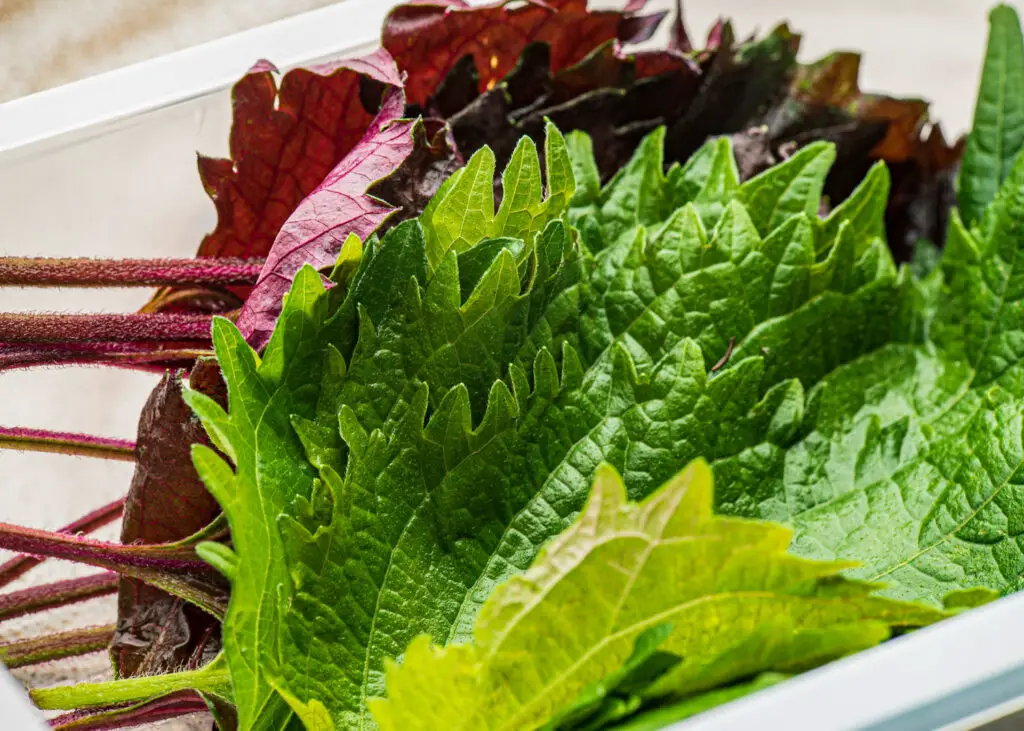
Perilla leaves, native to the mountainous regions of Asia, are used in various cuisines, such as Korean, Thai, Japanese, and Vietnamese. The herb belongs to the mint family and is available in different varieties, including Korean perilla leaves, Japanese shiso, and purple perilla. Each type offers distinctive characteristics, making these leaves a versatile and fascinating ingredient in the culinary world.
Perilla Frutescens Var
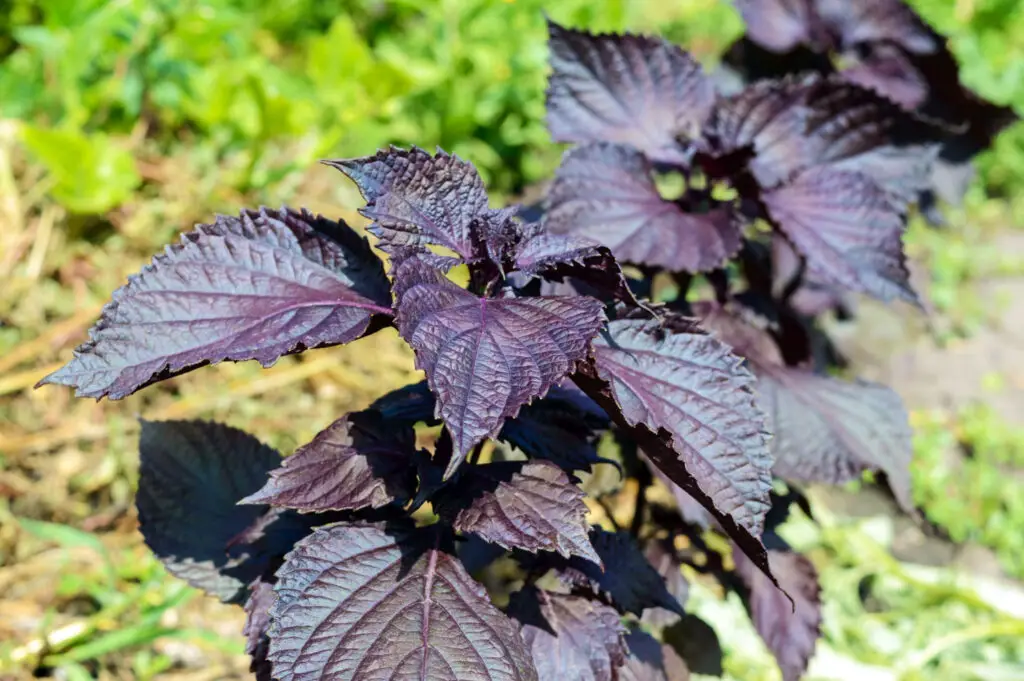
Perilla frutescens var is the scientific name for perilla leaves, which belong to the mint family. This variety is widely utilized in Asian cuisine, featuring in dishes such as Korean ssam, Vietnamese spring rolls, and Japanese sushi. Apart from its culinary uses, perilla frutescens var has medicinal properties, having been used in traditional Chinese medicine for many years.
Its anti-inflammatory, antioxidant, and anti-cancer properties make it a prized ingredient in the kitchen and natural remedies.
Korean Perilla Leaves
Korean perilla leaves, also known as sesame leaves, are native to Asia and primarily used in Korean cooking. These leaves are larger and possess a more robust flavor than their Japanese counterpart, shiso. Korean perilla leaves are often used in:
- Pickled side dishes
- Stir-fries
- Soups
- Wraps for grilled meat dishes
Japanese Shiso
Japanese shiso, an aromatic herb native to Japan, is often used in Japanese cuisine. Its distinct flavor, reminiscent of basil and cilantro with subtle undertones of cumin and cloves, makes it a popular choice as a garnish or in sushi. Japanese shiso leaves can be consumed fresh, pickled, or cooked with sesame oil.
As with its Korean counterpart, Japanese shiso is believed to possess medicinal properties and has been used in traditional Chinese medicine for its anti-inflammatory and antioxidant benefits.
The Flavor Profile of Perilla Leaves
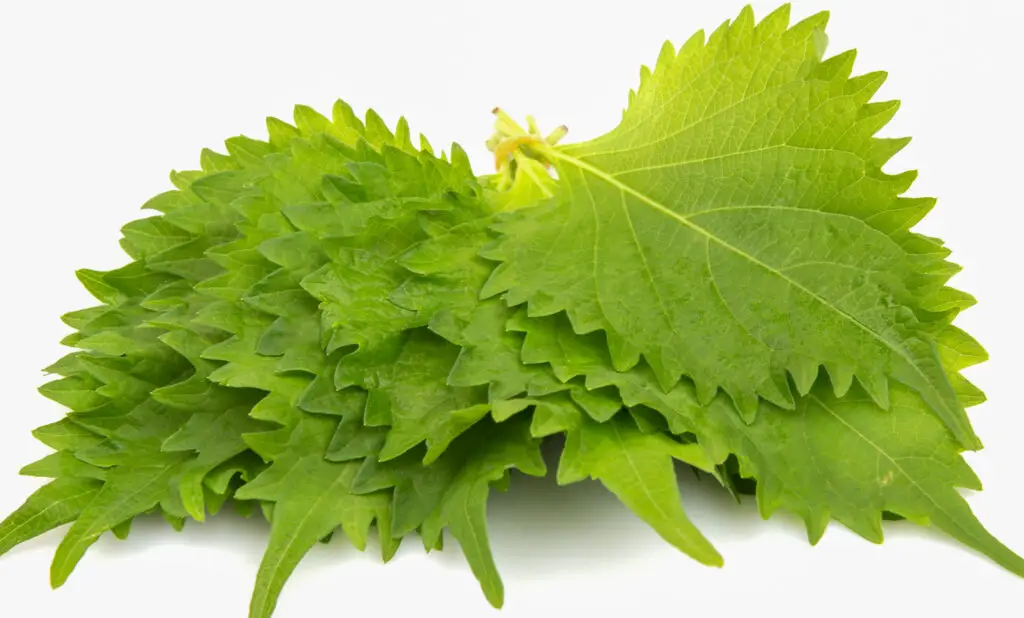
Perilla leaves offer a unique flavor profile with hints of:
- star anise
- licorice
- basil
- mint
They provide a complex and distinctive taste. The mildly sweet, grassy, and herbaceous flavors complement a slightly spicy undertone, making them an exciting addition to various dishes.
Their flavor sets them apart from other herbs in the mint family, offering a more elaborate and distinctive taste experience.
There are a range of perilla leaf substitutes if you can’t get your hands on the real thing.
Perilla Leaves Taste
The taste of perilla leaves is unique, with their grassy and herbaceous notes intertwined with a hint of spice. Their complex flavor profile exhibits mild licorice-like, grassy, and minty notes and a nutty undertone. This distinctive taste is akin to other herbs in the mint family, such as basil and oregano, but with a slight piquant undertone.
Incorporating Perilla Leaves into Your Cooking
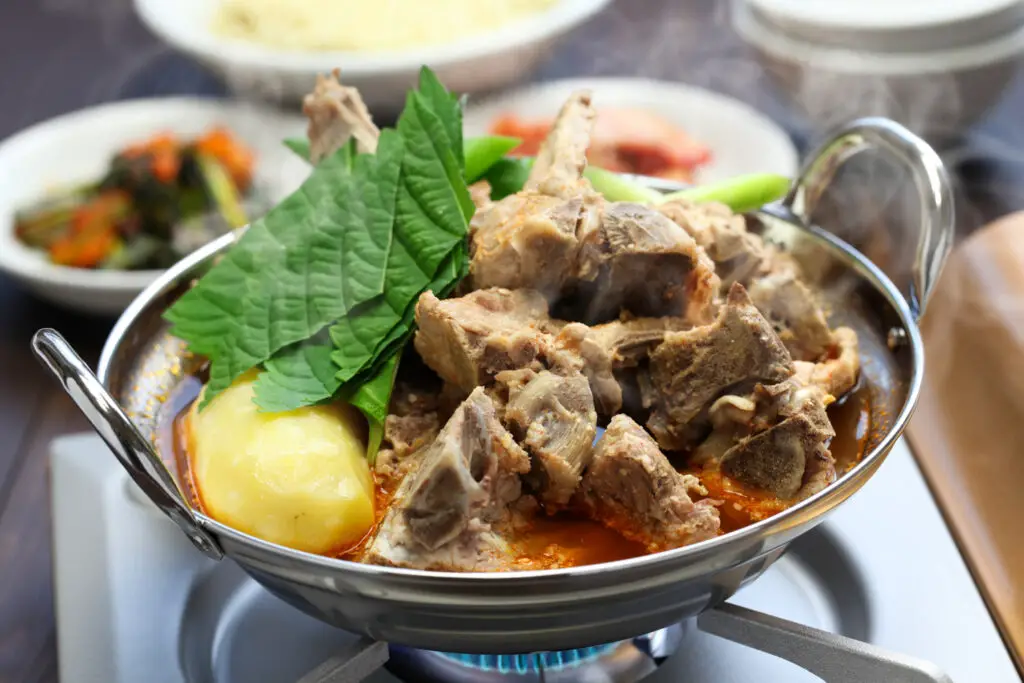
Perilla leaves can be easily incorporated into your cooking to add flavor and freshness to your dishes. Whether eaten fresh, pickled, or cooked with sesame oil, these aromatic leaves add a unique and delightful taste to any meal.
Their versatility in taste and texture can elevate a simple dish or create a culinary masterpiece.
Eaten Fresh
Fresh perilla leaves are a fantastic addition to salads, wraps, and garnish for various dishes. Their mild, grassy, and herbaceous flavor pairs well with multiple ingredients and adds a touch of freshness to any dish.
When using fresh leaves, it is important to handle them gently to avoid bruising or damaging the delicate leaves. To revitalize old wilted perilla leaves, follow these steps:
- Re-cut the stems of the wilted leaves.
- Place the stems in a container of water.
- Allow the leaves to soak in the water for a few hours.
- After soaking, the leaves will regain their freshness and can be used in your favorite recipes.
Pickled Perilla Leaves
Pickled perilla leaves are a popular side dish in Korean cuisine, adding a tangy and flavorful element to any meal. To make them, you can follow the general procedure of pickling vegetables or use soy sauce to create a traditional Korean side dish known as Kkaennip Jangajji.
To store pickled perilla leaves and ensure their freshness, follow these steps:
- Place the leaves in an airtight container.
- Keep the top of the container open.
- Cover the leaves with a wet paper towel.
- Periodically re-wet the towel to prevent desiccation.
Cooking with Sesame Oil
Perilla leaves can be cooked with sesame oil to enhance their flavor and aroma, making them an ideal ingredient in various cooked applications. The use of sesame oil adds a rich, nutty taste to dishes such as:
- Ssam wraps
- Perilla and green onion salad
- Namul
- Marinated perilla leaves
Health Benefits and Medicinal Uses of Perilla Leaves
Perilla leaves have been used in traditional Chinese medicine for centuries and offer many modern health benefits. Their anti-inflammatory, antioxidant, and immune-boosting properties make them valuable to any diet.
This section will delve into the medicinal uses of perilla leaves in traditional and contemporary contexts.
Traditional Chinese medicine
In traditional Chinese medicine, perilla leaves have been used to treat various ailments, such as:
- colds
- coughs
- vomiting
- abdominal pain
- constipation
- allergies
- asthma
- indigestion
- nausea
- skin rashes
Their use in traditional medicine dates back to the Song Dynasty of China, where they were documented in a medicinal formula dating back to 1110 BCE.
Modern Health Benefits
Modern research has revealed various health benefits of perilla leaves, including their anti-inflammatory, antioxidant, and immune-boosting properties. The compounds can help reduce inflammation in the body, protect against oxidative damage, and support the immune system.
Growing and Harvesting Your Own Perilla Leaves
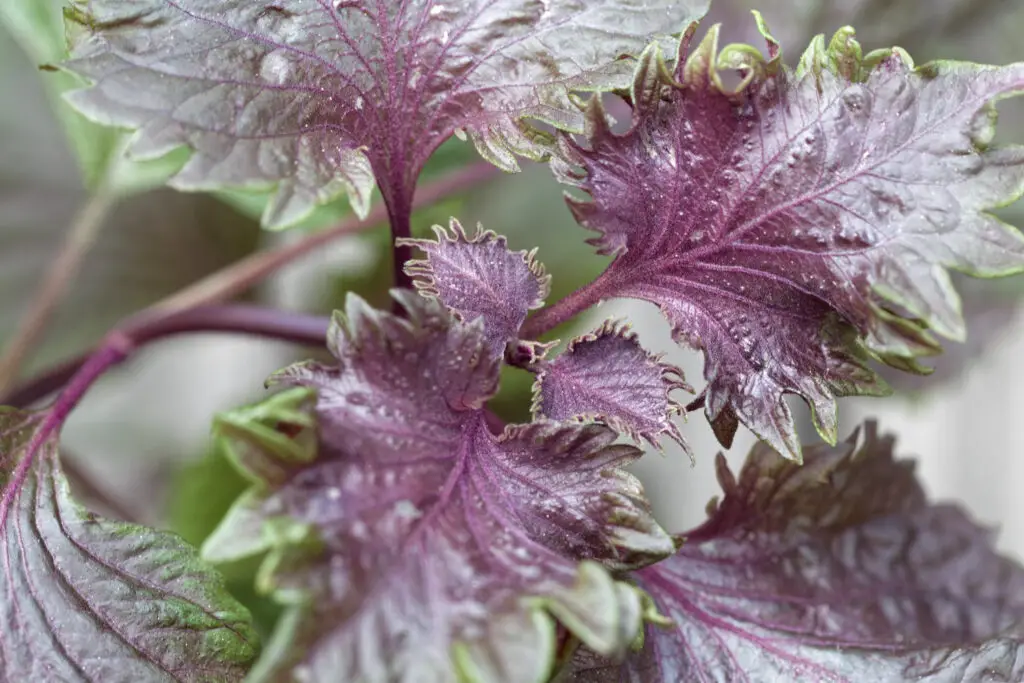
Growing and harvesting your own perilla leaves can be a rewarding and fulfilling experience. With the proper care and attention, you can enjoy fresh, homegrown leaves in your cooking, bringing a unique and flavorsome touch to your dishes.
In this section, we will provide guidance on planting, maintaining, and harvesting your perilla leaves.
Planting Perilla Seeds
To plant perilla seeds, follow these steps:
- Soak the seeds for 4-8 hours to soften their outer shell.
- Plant the seeds indoors 4-6 weeks before the last spring frost, ensuring they receive adequate light and moisture.
- Use the bare minimum of compost or use surface sowing to cover the seeds.
Once planted, maintain a distance of 10-12 inches (25-30cm) between each plant to allow for adequate growth.
Maintaining Healthy Plants
To maintain healthy perilla plants, provide them with regular watering during the growing season, ensuring the soil remains evenly moist but not waterlogged. Incorporate organic matter such as compost, aged manure, or leaf mold into the ground to aid in moisture retention and nutrient provision.
To prevent overwatering, check the soil moisture before watering and wait until it has dried out before providing additional water.
Harvesting Perilla Leaves
When harvesting perilla leaves, it is important to consider the overall architecture of the plant, ensuring adequate light and air circulation. Start harvesting leaves once the plant is 8 inches or taller. Harvesting can be done in two ways. You can trim individual leaves from the bottom up or trim at a node to stimulate branching. Trimming at a node encourages the plant to produce two stems, promoting fuller growth and a continuous supply of fresh leaves for your culinary creations.
Perilla Leaves in Korean Cuisine
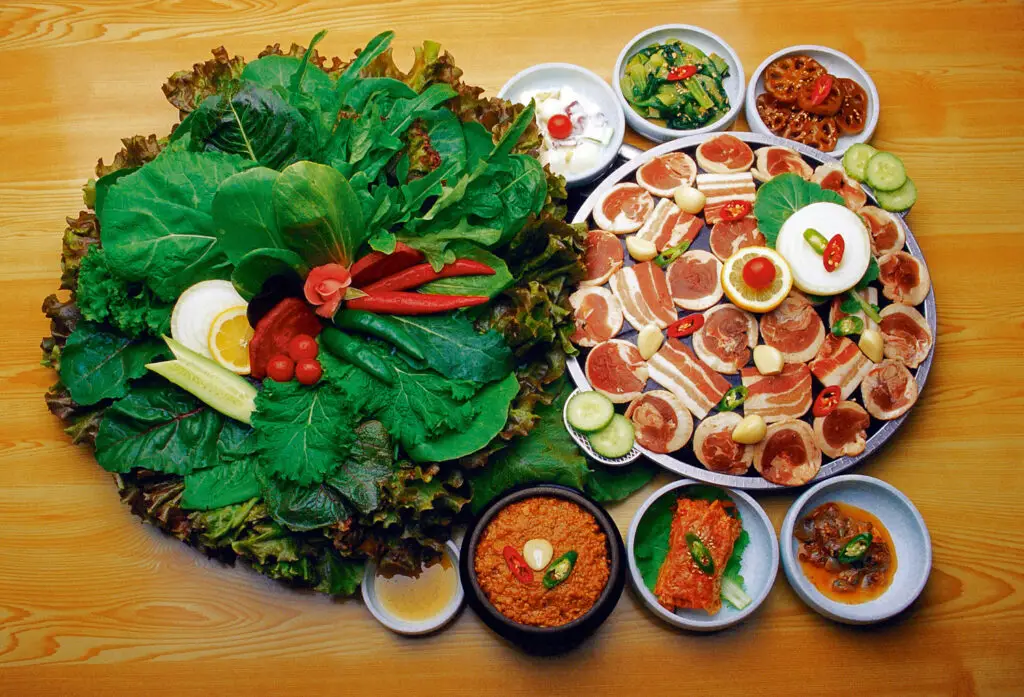
Perilla leaves are a staple ingredient in Korean cuisine, adding a unique and delightful taste to many dishes. Often used with soy sauce, sesame leaves, and grilled meat dishes, perilla leaves provide an exciting and flavorsome element to traditional Korean cooking.
Soy Sauce
Soy sauce is commonly used in Korean cuisine to marinate or season perilla leaves, enhancing their flavor and aroma. In dishes such as ssam, Vietnamese spring rolls, and sushi, soy sauce adds a savory and umami taste, perfectly complementing the unique flavor of perilla leaves.
Grilled Meat Dishes
Grilled meat dishes, such as Korean BBQ, Bulgogi, and Jeyuk Bokkeum, often incorporate perilla leaves as a wrap or side dish. The refreshing and unique flavor of perilla leaves adds a delicious twist to these popular Korean dishes, enhancing their taste and providing a delightful contrast to grilled meats’ rich, savory flavors.
Perilla leaves, a beefsteak plant, are a great way to add a unique flavor to grilled meat dishes.
Common Perilla Leaf Dishes and Recipes
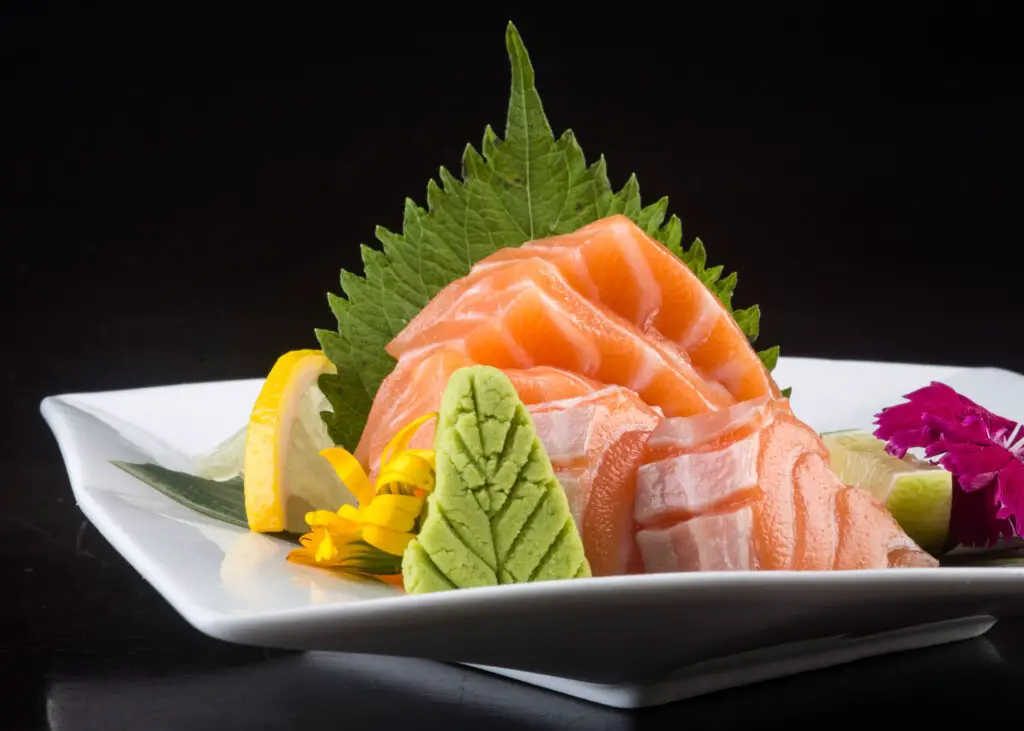
Perilla leaves are featured in numerous dishes and recipes, both traditional and contemporary. From Korean ssam and Vietnamese spring rolls to Japanese sushi, these versatile leaves add a unique flavor and freshness to various culinary creations.
Their distinct flavor and texture make them a great addition to salads, soups, and stir-fries.
Korean Pickled Perilla Leaves – Kkaennip Jangajji
A classic Korean side dish, Pickled Perilla Leaves (Kkaennip Jangajji), perilla leaves are soaked in a soy sauce brine for at least 4 hours and served alongside rice or other Korean dishes. Recipe here.
Korean Ssam
Korean ssam is a popular dish where grilled meat and other ingredients, such as rice, ssamjang, and pickled vegetables, are wrapped in perilla leaves. The unique flavor of perilla leaves adds a delightful contrast to the rich, savory taste of the grilled meat, making Sam a delicious and satisfying meal.
Vietnamese Spring Rolls
Vietnamese spring rolls often include perilla leaves for added flavor and freshness. The mild, grassy, and herbaceous taste of perilla leaves complements the delicate flavors of shrimp, pork, and vegetables, creating a refreshing and delicious appetizer.
Perfect for dipping into various sauces, these spring rolls will surely be a hit at any gathering.
Japanese Sushi
Japanese sushi sometimes uses perilla leaves to garnish or to add a unique flavor. The distinctive taste of perilla leaves pairs well with the other ingredients in sushi, such as seafood, rice, and vegetables.
Summary
In conclusion, perilla leaves offer possibilities for culinary enthusiasts and health-conscious individuals. From their unique flavor profile and versatility in cooking to their numerous health benefits and ease of growing, perilla leaves are a valuable addition to any kitchen. By incorporating perilla leaves into your cooking, you can elevate your dishes and explore new culinary horizons, all while reaping the benefits of this remarkable herb.
Frequently Asked Questions
What are perilla leaves good for?
Perilla leaves have long been used in traditional Chinese medicine to treat illnesses such as asthma, the common cold, and other acute disorders. In Asian cooking, they are used as a garnish, and leaf extracts show antioxidant, antiallergic, anti-inflammatory, antidepressant, GI, and dermatologic properties.
Additionally, they may be used as an antidote to food poisoning.
What is the Perilla Leaf controversy?
The Perilla Leaf controversy has sparked a heated debate over the meaning of loyalty in a relationship when one’s romantic partner helps someone else by separating Perilla leaves that have become stuck together.
This scenario has led to varying opinions among internet users, creating an intense discussion on the issue.
What does perilla taste like?
Perilla has a grassy flavor with hints of anise or licorice, making it a pleasing herb to incorporate into dishes. The bigger leaves offer versatility when cooking, from garnishes to more complex meals.
What do Koreans use perilla leaves for?
Koreans use perilla leaves, known as “kkaenip” or “ggaenip,” in various dishes such as pickled side dishes, stir fry, soup, and a wrap. They belong to the mint family and have a strong aroma, similar to Japanese shiso.
The leaves are often used as a garnish or as a wrap for rice and other dishes. They are also used to make tea, which is believed to have medicinal properties. The leaves can be eaten raw or cooked, a popular ingredient in Korean cuisine.

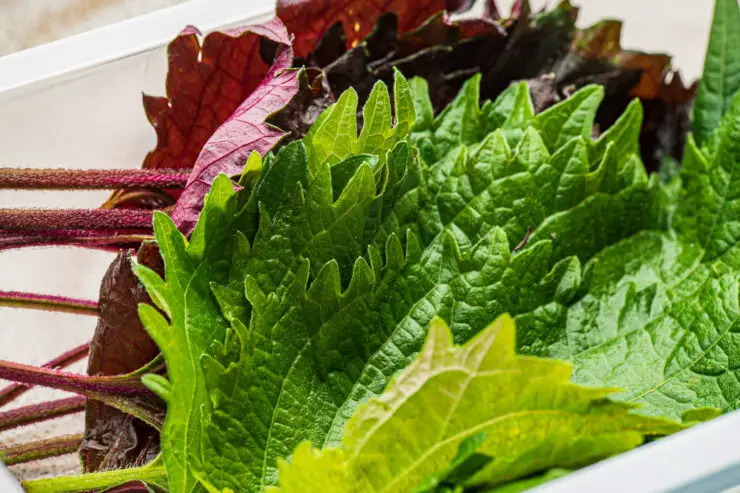
Years ago my uncle had told me about a person in our family we have native American roots who came to his baby sister’s they were twins, and healed them of thrush in their mouth and throat with perilla. The woman packed perella into a pipe and smoked it. then she breathed it over their mouth and nose and held their mouth and no shut until they coughed when she let go the thrush was gone. This was back in the early 1900s. My uncle himself said once he was tending some fire screens made up of burning tires and he had a stick and he was about 12 and he stuck the stick in the burning tires and some of it flung up on his arm. he was very hurt very screaming. Again this woman who was like an extended family member came and made she smoked the perilla and made a poultice probably using some lard and smeared it all over his arm and he said he never had 3rd degree burns, he never had scars, and it healed it almost instantly. I’m very interested in this herb because it also is empty cancer.
Hello Sheila. Thank you very much for sharing those stories. They are very interesting. Seems Perilla leaves have more benefits than we knew.
Thanks again. Markus